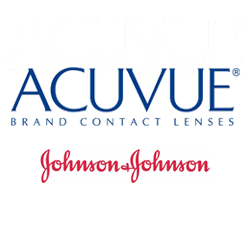Contact lenses have undergone significant advancements in the last decade, evolving from the low breathability of plastic polymer lenses to the high oxygen diffusion of silicone hydrogel. In addition, lenses now can correct for astigmatism, allow for reading vision, block UV light, and/or have tint. There are daily disposable, two week disposable, one month disposable, and 6 month disposable lenses, as well as soft lenses, hard lenses, scleral lenses and hybrid lenses.
What determines which lens we fit you in?
Firstly, we attempt to get an understanding of what your goals are for contact lenses. Are they for sports? Work? How important is the distance acuity? How about the close acuity?
Secondly, we determine how often you are planning on wearing the lenses. Are they for day-to-day use? Weekends? Swimming?
And finally we asses the health of your cornea (front the eye), its curvature, and level of dryness to ultimately choose which lens would work best for you.
The vast majority of patients who are interested in contacts will be fit by us into soft contact lenses, while the hard-to-fit eyes (the eyes who have corneal issues and/or the eyes who have failed with soft contacts in the past) may instead be fit with rigid gas permeable lenses, hybrid lenses, or scleral lenses.
Contact lens patients of Calgary Vision Centre can enjoy
free trials of different soft contact lens brands,
free replacements of ripped or torn soft contact lenses,
no cost exchange of soft contact lenses if your prescription changes during the year,
no cost ocular health check-up if the contact lens becomes bothersome.
Convenient re-ordering of lenses on our webstore, in office, or over the phone and we can ship the lenses to your home or office.
Contact lenses and The cornea
(If you have very high astigmatism or a condition called keratoconus, this may interest you)
The single most important part of the eye's anatomy in regards to fitting a contact lens is indeed the cornea. Not only is the cornea the clear dome of tissue that the contact lens rests on, but it's also a major predictor in a person's ability to see clearly with or without correction. A normal healthy cornea is for the most part relatively straightforward to fit with a soft contact lens, since the shape of a normal cornea is essentially derived from a sphere, and a sphere is essentially the shape in which most soft contact lens are based on.
There are a significant number of corneas, however, that are not entirely spherical, and instead have a shape that shares properties with a cylinder. These corneas are deemed to have astigmatism. Astigmatism, for the most part, does not pose much of a challenge when fitting contact lenses, as long as the astigmatism is relatively symmetrical. A good analogy to what this ideal symmetry looks like is a football: you can cut it lengthwise, or across its middle bisecting the laces, and either way you will be left with two halves that are identical mirror images. If the cornea exhibits this type of symmetry, then a soft astigmatism contact lens (termed a toric lens) can likely be fit successfully.
An astigmatism cornea on the left exhibiting properties of a cylinder, a normal spherical cornea on the right.
What if I have keratoconus?
Not all astigmatisms come in the symmetrical variety. The vast majority of corneas that suffer from corneal ecstasia (a progressive warpage of the cornea with keratoconus being the most common example), extreme dryness, or are either post-corneal transplant or post-lasik and/or have a history of trauma tend to not exhibit symmetrical astigmatism and instead show a localized warping of the cornea. Think of how a ball would look if you ran over it with your car. If it survived and didn't pop, it would be left looking highly deformed, neither like a sphere nor a cylinder (football). This is termed irregular astigmatism.
The ability of the soft contact lens to conform to the contours of the cornea is one of the main reasons that they are so comfortable, and therefore so popular. However this highly beneficial feature can also lead to its biggest weakness: conforming to the shape of an irregularly shaped cornea. Having an irregularly shaped cornea will cause an eye to need a prescription, but if the contact simply morphs into the shape of the irregular cornea upon settling on the eye, it essentially leaves the eye back at square one (having poor vision). The prescription that is placed into a contact lens (or a pair of glasses for that matter) is mathematically determined based on the curvature of the lens, so if the underlying foundation changes (the lens curvature), then the entire prescription changes as well. In short, the prescription in a lens and its shape can be used interchangeably, since changing one leads to a mathematically predictable change in the other. If I increase the prescription in a contact lens, I by definition am altering its shape in a predictable manner; If I have contact lens with a fixed prescription, and flatten it out in my hand, I have essentially altered its prescription. Knowing this concept is crucial to understanding why irregularity shaped corneas benefit so tremendously from being fit in scleral contact lenses.
A soft contact lens conforms to the shape of the underlying object.
A scleral contact lens maintins its shape regardless of what it rests upon.
A soft contact lens unfortunately conforms to an irregular shaped cornea (left, a keratoconus eye), effectively neutralizing any prescription the contact lens may have had. A scleral lens, on the other hand, maintains it shape (right) and can provide a tremendous increase in visual acuity to any irregularly shaped cornea, include those with keratoconus.
Dr. Burke has a special interest in the fitting of scleral contact lenses, and has devoted a significant amount of time into developing the proper technique and fitting alogorithm to give patients the greatest chance at success with these lenses. Because of this, he now wears scleral contact lenses himself, not because he has an irregular cornea, but in an effort to allow him to be as knowledgeable as possible regarding these remarkable lenses including their insertion, removal, and cleaning regime. He finds the lenses extremely comfortable and help tremendously with his dry eye. All images and videos on this page are created by Dr. Burke in an effort to help make scleral lenses more approachable to patients who need them.











